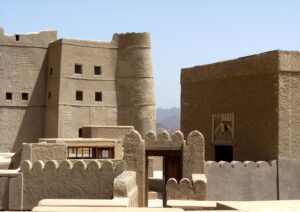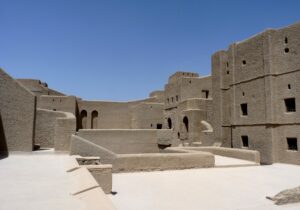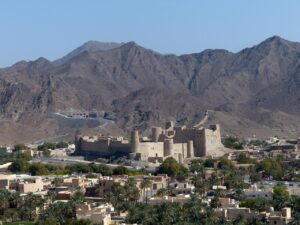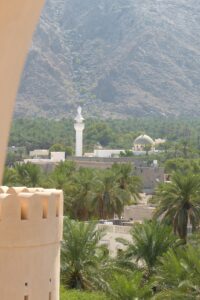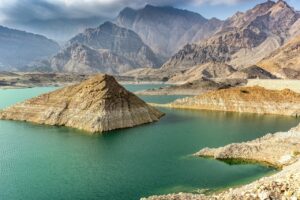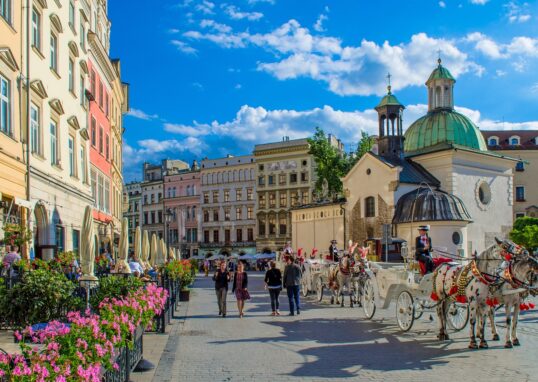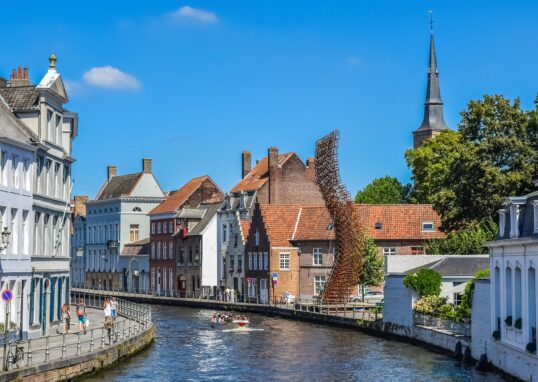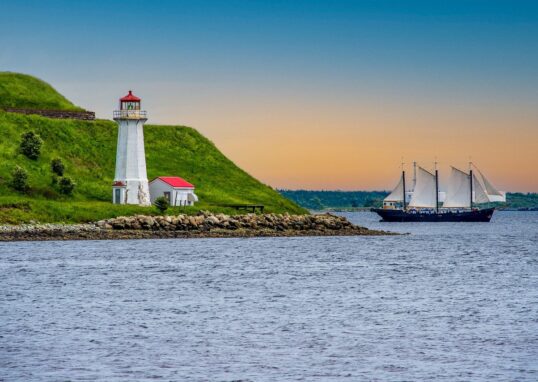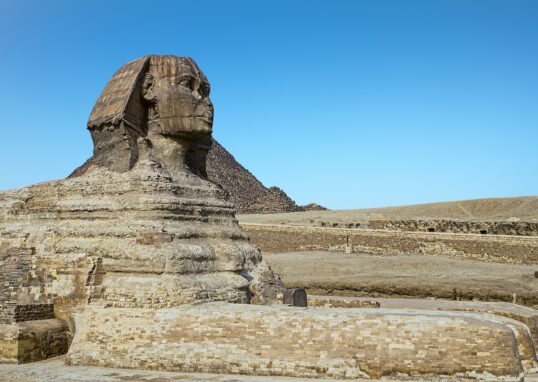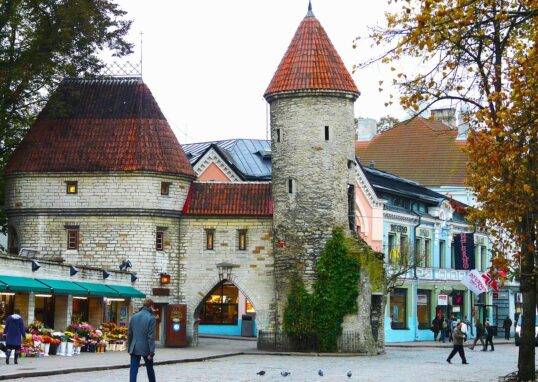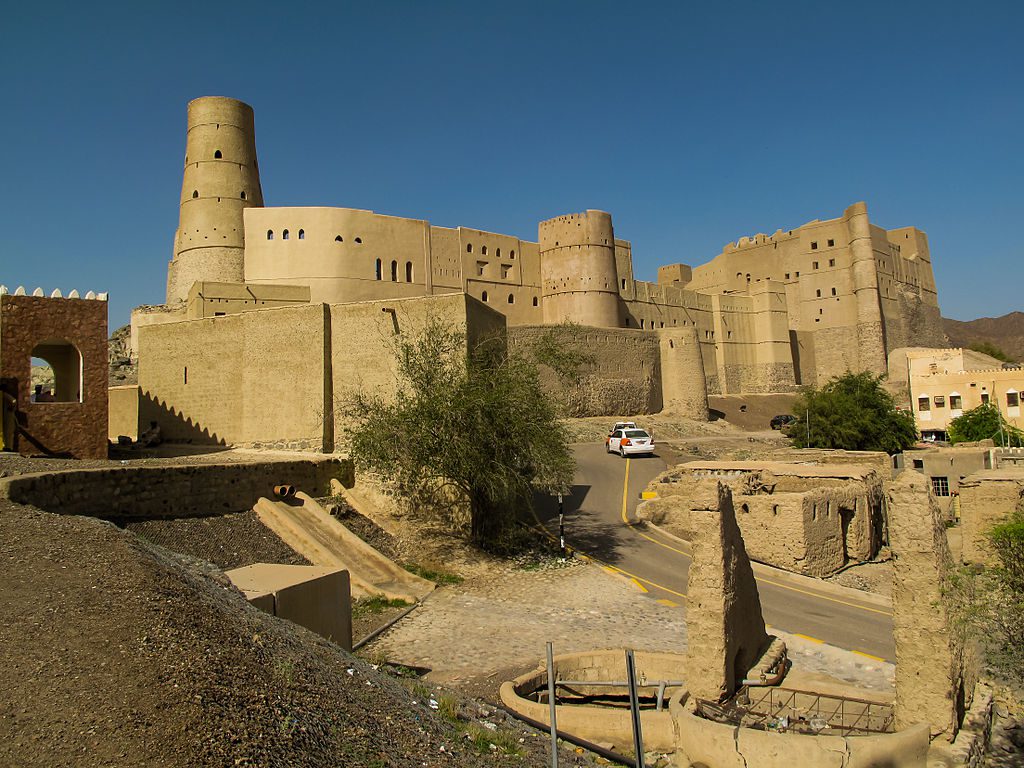
Bahla Fort – The Timeless Fortress of Oman
Bahla Fort stands tall in the heart of Oman. It is one of the oldest and best forts in the Arabian Peninsula. Located at the foot of Jebel Akhdar mountains, the fort protects the town of Bahla in the Ad Dakhiliyah Governorate. The fort is not just a building. It is a history inscribed in mud brick and stone, which displays the exercise of power, protection, and beauty. The fort has been considered by UNESCO as a World Heritage Site since 1987. This was because of its unique architecture, historic importance, and cultural value. The site shows evidence of the innovation and expertise of Omani individuals far back in history who planned it using common materials but with enormous imagination. Bahla Fort also shows the determination of the Banu Nebhan tribe. They ruled the greater part of Oman’s central region during the 12th and 15th centuries. As you walk along the high walls and narrow corridors, you can feel nearly the footstep of the merchants, warriors, and rulers who once inhabited the place.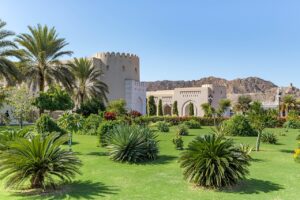
History of Bahla Fort
Bahla Fort traces its history back to pre-Islamic times. Historians opine that the fort was founded during the 13th century when the Banu Nebhan tribe ruled. The Banu Nebhan tribe was powerful and dominant. They controlled the trade in the coastal and desert parts of Oman. Bahla became their capital, and their fortress was the fort. The fort was originally built with mud bricks and stonework foundations. These provided it harmoniously to blend in with the desert environment. Over the centuries, many rulers made additions, repairs, and adjustments. The fort grew both in size and importance. During its prime, Bahla Fort was not only a defensive stronghold but also a residential palace. It served religious and administrative purposes. Scholars, artisans, and merchants flocked here. The fort itself was a living city with an oasis around it and ancient walls that stretched for about 13 kilometers.
Architecture of Bahla Fort
Bahla Fort architecture is plain but very advanced. It reflects traditional Omani defensive style and advanced adaption to the environment. The fort was built out of mud brick, a locally available building material in Oman. Straw and mud were used with water to make bricks which were left to dry in the intense desert sun. The walls were then plastered with a coat of clay, giving the fort its distinctive sandy color.
Structure
Bahla Fort consists of three main areas:
- The Old Fort – This is said to be the oldest section, constructed during the early Banu Nebhan era.
- The Middle Fort – Constructed later, it reflects more sophisticated building techniques.
- The New Fort – Constructed in the 17th century with superior defensive capabilities.
The fort is bordered by high walls, 12 meters at a time, that enclose it. The walls are solid to protect the inside from heat and attack. The fort’s towers rise majestically towards the blue Omani sky. They were used as look-out towers and defense towers.
Interior Design
Inside, the fort houses numerous halls, stairways, and courtyards. Each served a purpose — living, storage, or protection. The central courtyard opens onto the mosque, where soldiers and kings prayed. Wells existed that had water during sieges. There were hidden passageways and channels that led to settlements nearby. The ornamentation is minimalist yet classy. Arched gateways, tiny windows, and carved wooden doors add ornament. The natural ventilation and sunlight usage reflect the builders’ deep understanding of climate and comfort.
The Oasis and Defensive Walls
Surrounding Bahla Fort is an oasis with palm trees and irrigation channels, which was the center of life for those who lived close to the fort. The old falaj system, which is a traditional method of irrigation, carried water from the mountains into the fields and gardens. The system exists today and is indicative of the high level of engineering skills possessed by ancient Omanis. The fort was defended by a long defense wall, which stretched around 13 kilometers and encircled the town. It was made of mud brick with towers and gates. This wall gave Bahla the name “The Walled Oasis.” It looks like a golden ribbon wrapping around the town from a distance.
Cultural Importance
Bahla Fort is not just a military structure. It is all about Omani culture, religiosity, and harmony. The fort is all about courage, expertise, and religion. The locally located Friday Mosque also adds to the sacred atmosphere of the fort. Authorities believe that it may have been one of the oldest mosques in Oman. Pottery and weaving were also famous in the town. Even today, Bahla pottery is famous across Oman. The artisans use the same ancient techniques passed down through generations. Local legend surrounds Bahla too. There is a belief that the fort is protected by ancient magic. According to local legend, the builders had supernatural powers to raise its walls. Nonetheless, whatever the truth of these myths is, they add a mystical quality to Bahla’s history.
Tourism and Visitor Experience
Today, Bahla Fort is open to the public as one of the top heritage places in Oman. Travelers from around the world come and enjoy its huge courtyards, climb the towers, and behold the view of the desert oasis. The fort is a peaceful and reflective experience. No chaos or throng can be heard. You can freely roam and feel the serenity that emanates from the ancient stone walls and the tranquil walls. English and Arabic information boards present information regarding the history of the fort. Guided tours can be arranged for individuals who want to learn more about the location. Photographers have a few beautiful angles here, especially while shooting during sunset when golden light is cast over the mud fort walls.
🌴 Surrounding Places Near Bahla Fort (Oman)
The surroundings of Bahla Fort are scattered with ancient villages, mountain landscape, and cultural sites. Each surrounding location is quaint in its own way. Visitors to Bahla can just spend a couple of days exploring the surrounding places. The region is representative of the essence of old Oman — plain, organic, and extremely historic.
🏰 Jabrin Castle – The Palace of Knowledge
About 7 kilometers from Bahla Fort is Jabrin Castle (also spelled Jabreen). This castle is among the most beautiful old buildings in Oman. It was built in the 17th century by Imam Bil’arab bin Sultan Al Ya’arubi, who was part of the powerful Ya’aruba dynasty of leaders. Unlike Bahla Fort, whose main purpose was defense, Jabrin Castle was built as a palace and center of studies. Scholars, poets, and religious tutors would live here and study. Inside, you will find elegant rooms, intricately painted ceilings, and wooden carved doors. Arabic calligraphy covers the walls, and the thin stairways lead to tranquil balconies. The view from the rooftop is excellent. You can see the green groves of the Jabrin Oasis and barren mountains in the horizon. Visitors generally say that Jabrin Castle is calmer and more refined than Bahla Fort. It proves the innovative side of Omani architecture.
🌆 Nizwa – The Old Capital of Oman
Only 40 kilometers east of Bahla is the city of Nizwa, one of Oman’s most well-publicized tourist attractions. The “Pearl of Islam,” as it is also called, was the country’s capital during the 6th and 7th centuries. It was a center of religion, scholarship, and trade.
Nizwa Fort
The gem of this location is the Nizwa Fort, which was built in the 17th century by Imam Sultan bin Saif Al Ya’arubi. It is famous for its enormous round tower, which is one of the largest in Arabia. The tower was built to resist invasion. It has narrow rifle slits and boiling holes from which the hot oil or date syrup could be poured upon invaders — an excellent defense technique. Within, there are displays of weapons, traditional dress, and household tools used by the old Omani people. From the top of the tower, one is able to see 360 degrees view of Nizwa city, date groves, and surrounding mountain ranges.
Nizwa Souq
Right next to the fort lies the Nizwa Souq, one of Oman’s most old-fashioned souks. The souk is divided into parts — one for silver jewelry, one for ceramics, one for dates, and a fourth for spices. The Friday animal souk is a one-of-a-kind experience. The goats and cows are brought for sale by the farmers, and the auction is loud and high-energy.
Nizwa’s Charm
Nizwa is also a gateway to other destinations like Jebel Akhdar (Green Mountain). The city unites historic past and modern amenities. Restaurants, hotels, and a serene river flowing through the city can be found. Nizwa shines stunningly in the evening with golden lights flickering on fort walls.
🏡 Al Hamra – The Village of Clay Houses
About 20 kilometers outside Bahla, the medieval village of Al Hamra is a perfect place to witness Omani traditional life. It dates back over 400 years, and its buildings are largely made of mud brick — similar to Bahla Fort.
Bait Al Safah Museum
One of the highlights here is the Bait Al Safah Museum, a traditional house converted into a cultural center. Women from the village greet visitors and show how people lived in the past. They grind coffee, bake Omani bread in clay ovens, and prepare incense and oil. Fresh dates and coffee are served to the visitors while they watch the demonstrations.
Walking Around
It is quiet when you take a walk through Al Hamra. You get to see old wells, falaj channels, and gardens with banana and date trees. The place is full of a unique silence that tourists love.
🏞️ 4. Misfat Al Abriyeen – The Mountain Paradise
Just a driving distance away from Al Hamra is Misfat Al Abriyeen, the prettiest mountain village in Oman. Situated on Jebel Shams’s slopes at a height of about 1,000 meters above sea level, the village boasts stone-built houses, narrow lanes, and green gardens.
Terraced Farms and Falaj
The villagers built terraces on which crops could be grown on the sloping mountain slopes. The terraces are watered by an ancient falaj system, whereby water is carried from the surrounding springs. Walking along these waterways is soothing and educational.
Scenic Views
From the summit of Misfat, it is possible to see the entire valley covered with palm trees and mountains. The sun setting is simply wonderful. The houses, stone and mud-made, are in harmony with the rocks. The majority of travelers comment on how Misfat is a fairy-tale village.
Guesthouses and Local Hospitality
There are a few guesthouses in Misfat Al Abriyeen where guests are permitted to spend the night. The hosts are friendly and hospitable. Breakfast is typically served with fresh honey, bread, dates, and Omani tea. This basic experience is etched in the memory.
⛰️ Jebel Shams – The Mountain of the Sun
About 60 kilometers from Bahla is Oman’s highest point at 3,009 meters, Jebel Shams. Translates to “Mountain of the Sun” because it is the first to see the sunrise and the last to lose daylight.
The Grand Canyon of Oman
The headlining feature here is Oman’s Grand Canyon — a huge gorge with cliffs dropping nearly a kilometer deep. One of the most spectacular landscapes of Arabia, it has refreshing climate and endless views.
Hiking Trails
Several trails are available for travelers to trek. The most favored is the “Balcony Walk,” which follows the rim of the canyon to a deserted village called Sab Bani Khamis. The trek is secure and offers breathtaking scenery of cliffs and valleys below.
Camping and Lodges
Tourists can camp near the summit or at Jebel Shams Resort. At night, the stars appear, which is a great place for stargazing. The climate is cool as opposed to the heat of Bahla desert.
💦 Tanuf Ruins and Waterfalls
Between Bahla and Nizwa are the mysterious Tanuf Ruins. The village was destroyed in the 1950s during the war between government and local tribes. The remains — ancient stone buildings, walls, and alleys — remain a silent witness to history. Walking among the ruins is walking among history. They also have a small mosque still standing. Nearby, on rainy days, you can see the Tanuf Waterfall flowing through stone hills. It is a peaceful picnic spot in the middle of nature.
🕌 Adam Town – Ancient Trading Center
Southeast of Bahla is the town of Adam, one of Oman’s oldest towns. The town was an important caravan stop on the highway from Nizwa to the desert. Adam possesses old mud-brick buildings, mosques, and falaj systems.
Historical Neighborhoods
The ancient quarter of Adam, Al Ainayn, boasts a labyrinth of winding alleys and run-down houses with exquisitely carved wooden doors. The atmosphere is serene and full of character. The centuries-old Al Awadhi Mosque is a perfect representation of Islamic architecture.
Local Life
The surrounding new town has markets for local handicrafts, halwa (Omani dessert), and dates. Photo enthusiasts will find much lovely detail to photograph here — mud design, desert light, and wooden windows.
🌾 Aflaj Irrigation Systems
Just beyond Bahla, travelers can also spot some of Oman’s historic falaj irrigation systems such as Falaj Dar Sayyid. The water channels run underground from mountains to villages and fields. They were built over 2,000 years ago and are still in operation today. Falaj system is the measure of the cleverness of Omani engineers. Falaj system is also the symbol of community cooperation because water is shared equally among farmers. Walking along a falaj in the morning is a peaceful walk. The gurgling sound of running water on the desert sunshine is magical.
🏜️ Jebel Akhdar – The Green Mountain
A bit further away from Bahla, about 80 kilometers, is Jebel Akhdar, or “The Green Mountain.” It is part of the Al Hajar mountain range and is famous for its green terraces and cool atmosphere.
Rose Gardens and Fruit Farms
The mountain has rose plantations. Every spring season, the air is filled with the fragrance of roses as they bloom. Locals extract rose water from the processes of age-old distillation. The mountain also boasts farms with pomegranate, peaches, and apricots.
Hiking and Villages
There are numerous walking trails that connect small villages like Wadi Bani Habib and Al Ayn. The ancient rock houses and peaceful surroundings attract nature lovers as well as photography enthusiasts. The view from the top is extensive and inspiring.
🏠 A’Rustaq and Nakhal Forts
If visitors go further west of Bahla, then they can visit A’Rustaq Fort and Nakhal Fort, both renowned for their mighty towers and hot springs nearby. The forts, nestled among palm groves and mountains, add to the Omani fortresses’ historical trail. A military post and a stopover on the trade route, Ain Thowarah Hot Springs at Nakhal also welcome tourists, where individuals can relax in hot natural pools. The water is from the mountains and is warm year-round.
🌙 Wadi Ghul – The Omani Canyon
Wadi Ghul, or the “Grand Canyon Village,” lies close to Jebel Shams. Wadi is encircled with massive cliffs and deep chasms. Traditional houses carved into the rock illustrate how people in the past lived in mutual harmony with nature. It is a great place for off-road adventures, photography, and hiking. Wadi bed is bordered with stones and arid riverbeds that carry the tales of time and the power of nature.
🕋 Manah Town – Center of Heritage
The other town nearby, Manah, has an old neighborhood called Harat al Bilad. The refurbished buildings, narrow alleys, and ancient mosques replicate the traditional architecture in central Oman. Manah was also a stopping point for travelers to the desert. Today, it is a cultural site bridging the old and the new.
🐫 The Desert Edge – Wahiba Sands
Though a bit more distant (about 150 kilometers east of Bahla), the majority of travelers undertake their journey to the Wahiba Sands Desert. It is famous for its golden sand dunes, which are over 100 meters tall. The travelers have camel rides, desert camps, and 4×4 dune bashing. On a clear evening, the stars are incredibly crisp. Hanging out around a campfire under the open sky gives a feeling of calm and freedom. It’s the perfect way to end a journey that has already begun in Bahla’s ancient fort.
Culture and Local Life
Bahla is not merely about its fort. The town itself is vibrant and full of tradition. The townspeople are welcoming and proud of their past. They continue to make pots by hand from local clay. The process is painstaking and slow — shaping, drying, and firing in open kilns. Tourists can observe the potters in action and even purchase souvenirs.
Legends and Myths
Bahla is also famous for its mythical stories. Many Omani legends speak of Bahla Fort. Some say that the fort was built in one night by a woman using magic. Others believe that jinns (supernatural beings) guard its walls. Locals keep talking about strange sounds at night. All these stories help to add to Bahla’s magical atmosphere that impresses tourists.
Preservation and UNESCO Recognition
When UNESCO added Bahla Fort to the World Heritage List, it was a major step towards preserving Oman’s heritage. Restoration was undertaken using traditional material and techniques in order to preserve the integrity. The project not only rescued the fort but also restored pride to the town. The fort is a living museum today. It teaches visitors about Omani architecture, history, and sustainable building. Bahla’s restoration success has prompted other restorations to be undertaken across the country.
Conclusion
Bahla Fort is not an ancient monument alone. It is a living memory of Oman’s past, art, and survival. The combination of mud-brick building, breathtaking desert landscape, and timeless legends renders it an Arabian heritage gem. Walking inside the Bahla Fort is akin to stepping into another time zone. Every tower and wall has tales to tell of strength, intelligence, and beauty. The villages, mountains, and oases surrounding it contribute to the richness of the experience. A trip to Bahla Fort is not merely a stroll through history, but a stroll into the very soul of Oman — unassuming, tough, and very earthy.

